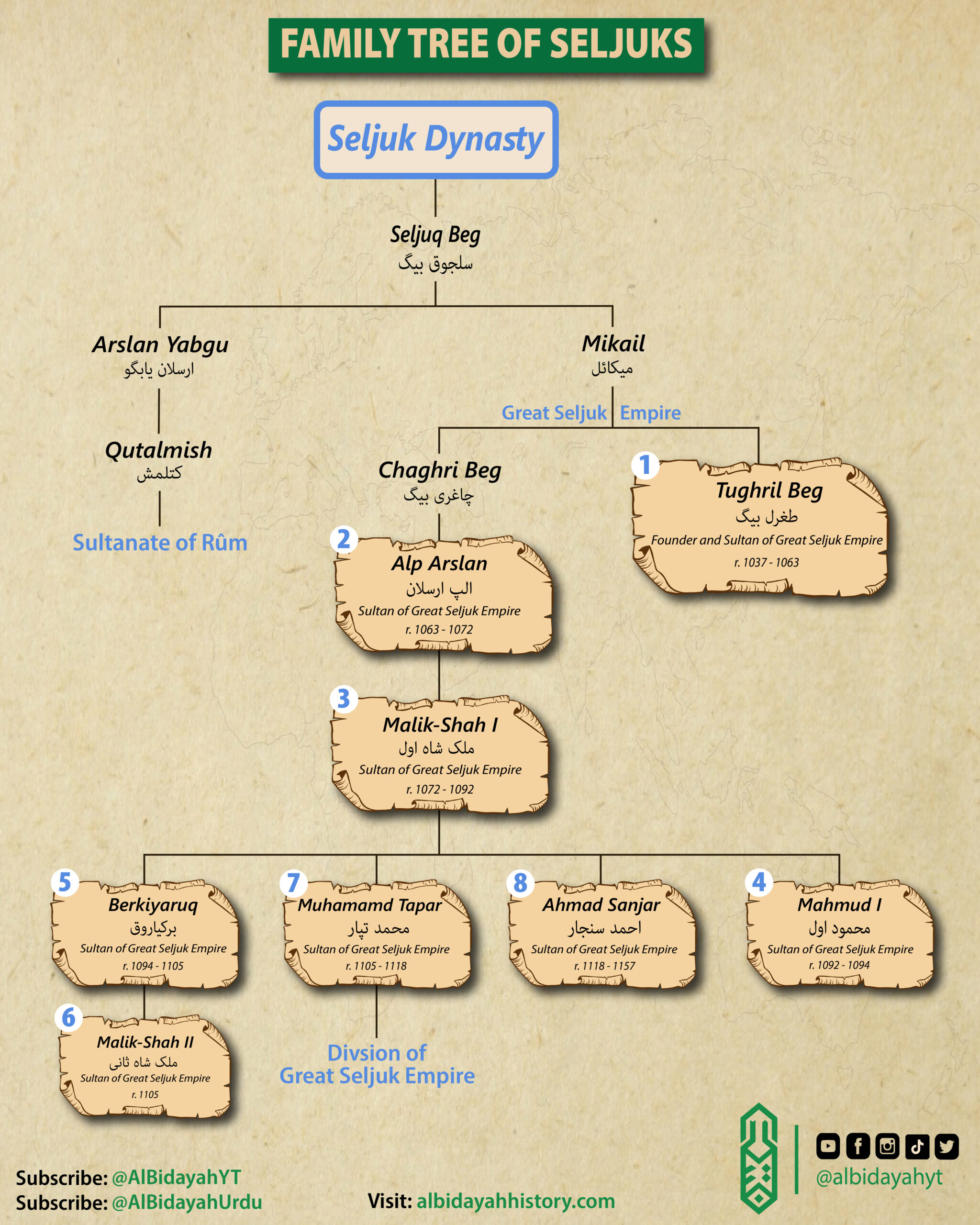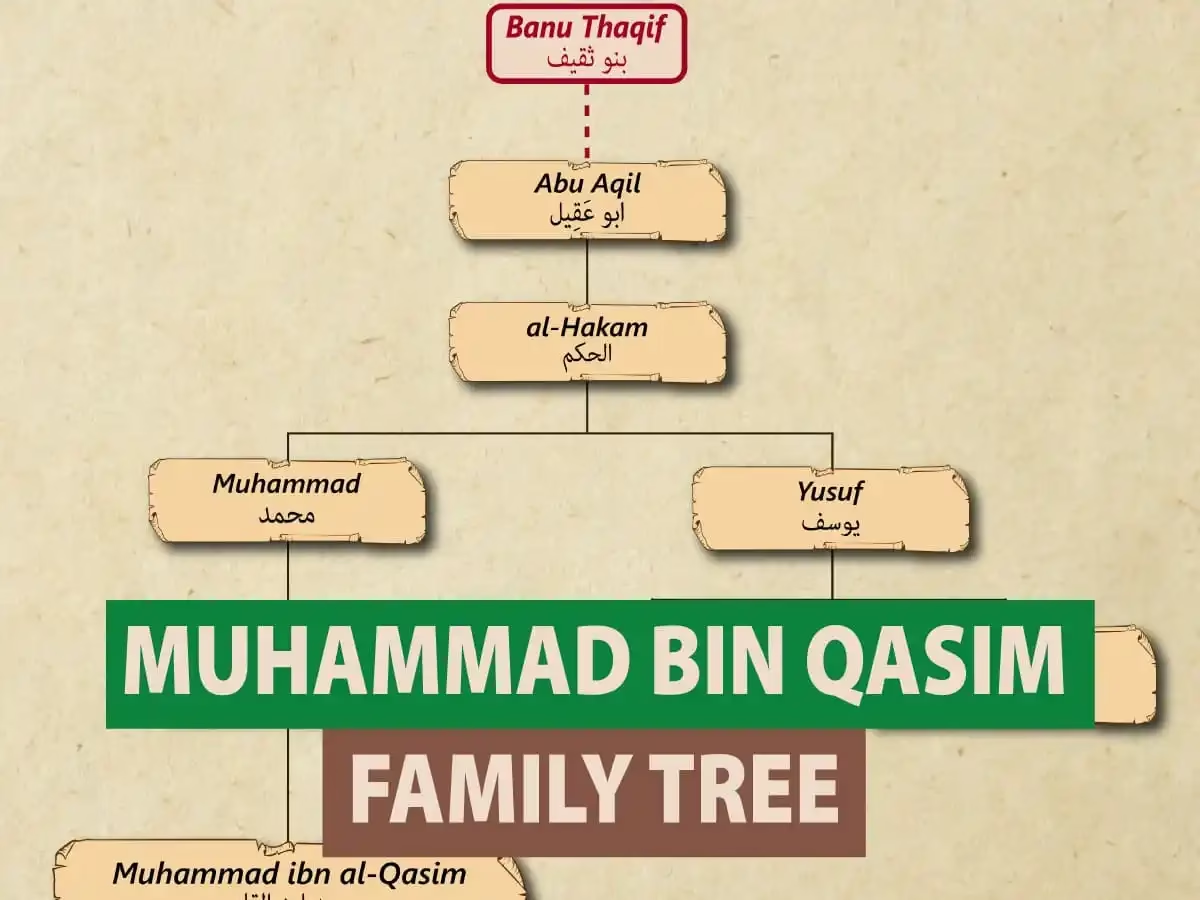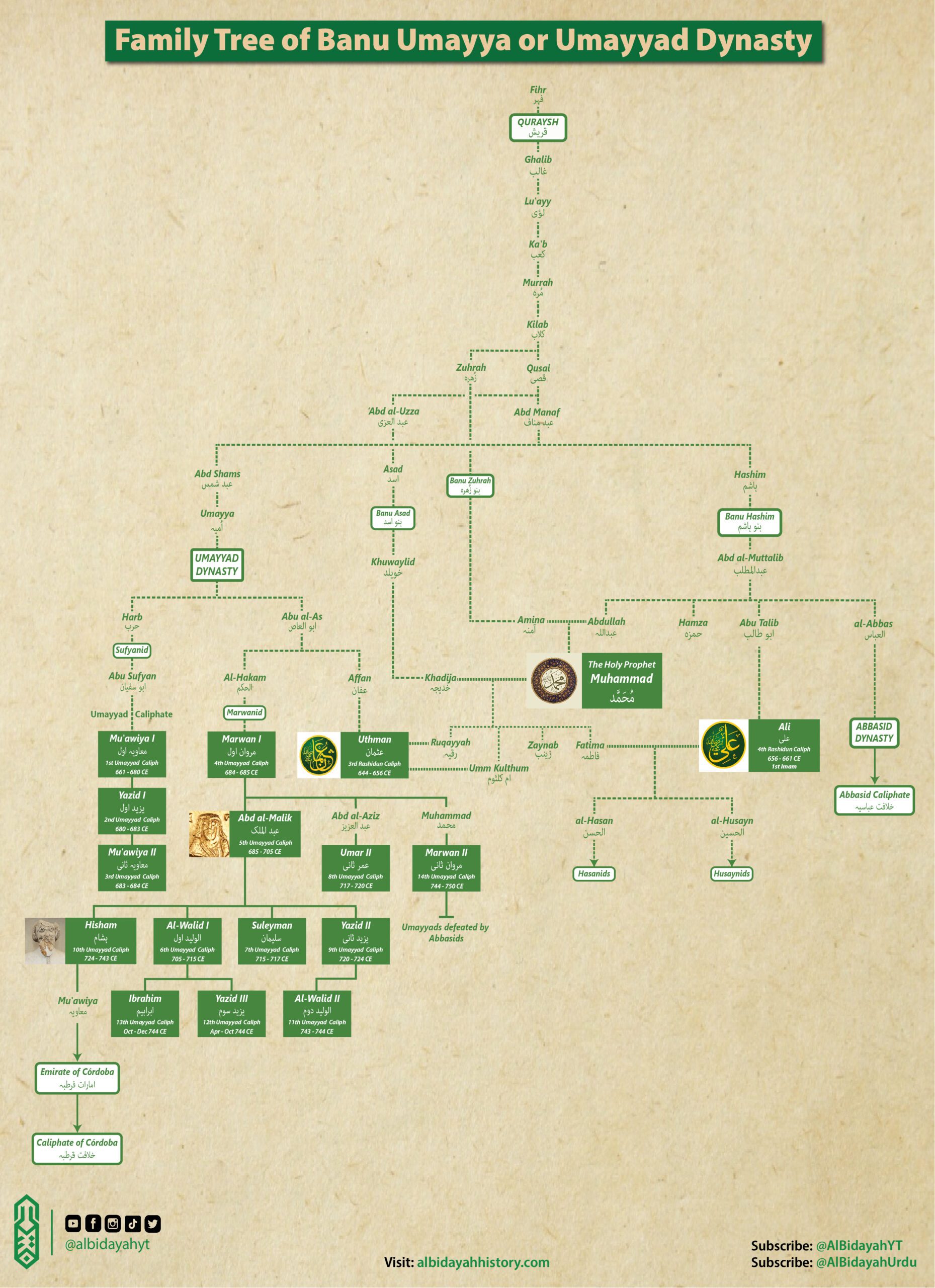The Seljuk Dynasty, a significant force in medieval Islamic history, laid the foundation for a powerful empire that stretched across vast territories and influenced the course of Islamic civilization. This article explores the family tree of the Seljuks, illustrating their lineage, key figures, and their contributions to history.

Seljuq Beg: The Founder of the Dynasty
The Seljuk family traces its roots to Seljuq Beg, the patriarch of the dynasty. Under his leadership, the Seljuks began their rise to prominence as a nomadic Turkish tribe in Central Asia.
Mikail and Arslan Yabgu: The Branches of the Seljuk Lineage
Seljuq Beg had two notable sons:
- Mikail: His lineage went on to establish the Great Seljuk Empire, one of the most influential Islamic states of the medieval period.
- Arslan Yabgu: From him descended the rulers of the Sultanate of Rum, a prominent state in Anatolia.
The Rise of the Great Seljuk Empire
The descendants of Mikail were instrumental in expanding the Seljuk power:
- Tughril Beg (1037–1063): As the founder and first Sultan of the Great Seljuk Empire, Tughril Beg consolidated the Seljuk territories, establishing the empire’s dominance over Persia and Iraq.
- Alp Arslan (1063–1072): Known for his military brilliance, Alp Arslan expanded the empire and achieved a decisive victory at the Battle of Manzikert (1071), paving the way for Seljuk control over Anatolia.
- Malik-Shah I (1072–1092): Under Malik-Shah’s reign, the empire reached its zenith, marked by significant advancements in science, art, and governance.
See Also: Sultan Alp Arslan Family Tree
The Division of the Empire
Following Malik-Shah I’s death, the Seljuk Empire fragmented into smaller states, leading to internal conflicts among his descendants:
- Mahmud I (1092–1094): His brief rule marked the early stages of the empire’s fragmentation.
- Berkyaruq (1094–1105): He struggled to maintain control amid internal rivalries.
- Malik-Shah II (1105): His reign was short-lived due to the ongoing power struggles.
- Muhammad Tapar (1105–1118): He attempted to stabilize the empire during a period of division.
- Ahmad Sanjar (1118–1157): Sanjar ruled over the eastern provinces and is considered the last great Seljuk ruler before the empire’s decline.
See Also: Umayyad Dynasty Family Tree
The Sultanate of Rum
The Seljuk legacy continued in Anatolia through the Sultanate of Rum, founded by the descendants of Arslan Yabgu. This state played a crucial role in the history of the region, bridging the gap between the Seljuk Empire and the later rise of the Ottoman Empire.
Conclusion
The Seljuk Dynasty’s influence on Islamic history and culture is profound. Through their conquests and governance, they shaped the political and cultural landscape of the medieval Islamic world. Their legacy endures, not only in historical records but also in the architectural and cultural contributions they left behind. The family tree serves as a testament to the dynasty’s remarkable journey from nomadic origins to imperial power.


